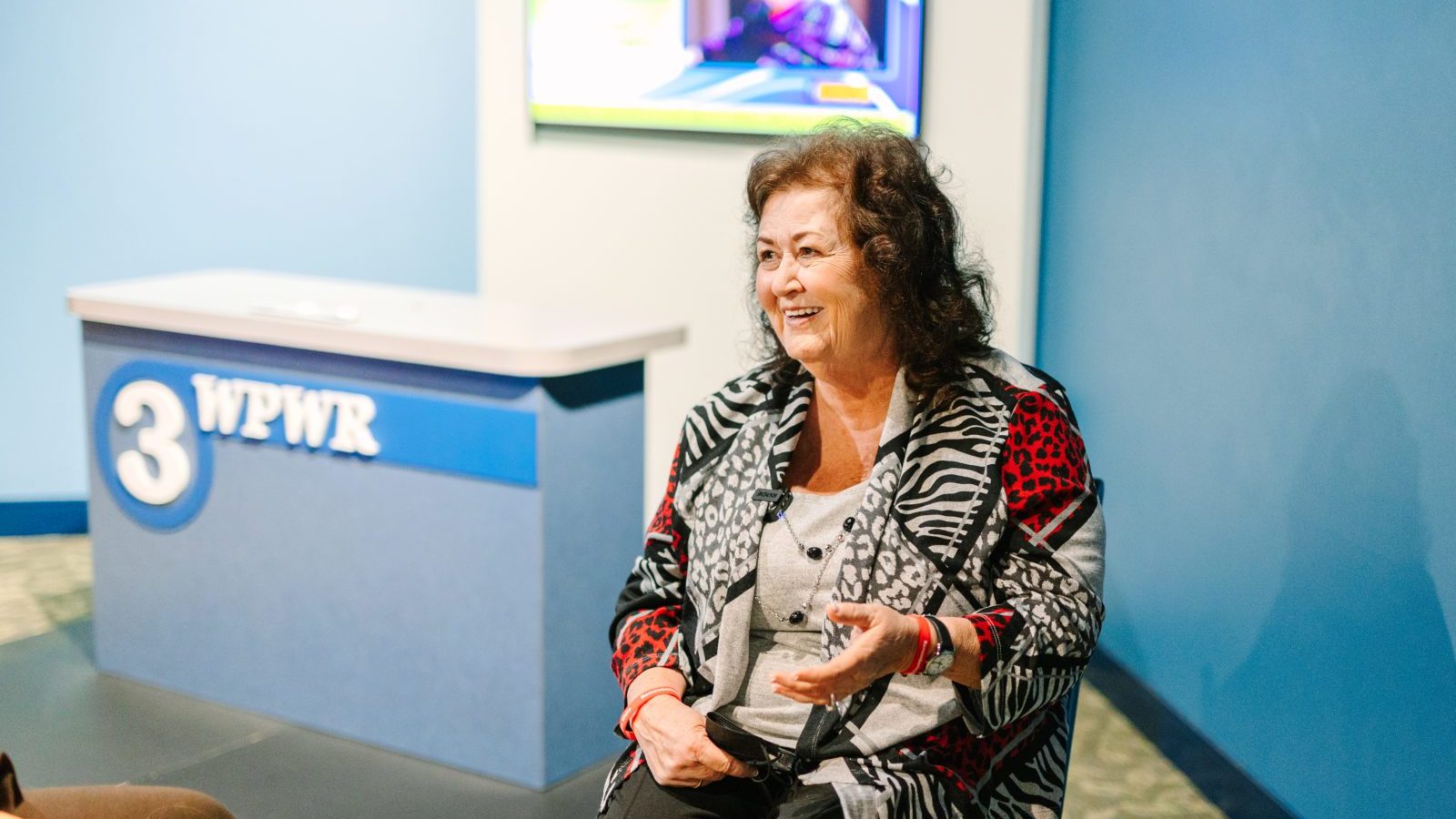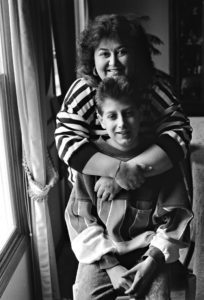40 From Our 40: Jeanne White-Ginder

Visitors to The Children’s Museum of Indianapolis can learn about Power of Children by stepping into the shoes of four extraordinary young people who stoically fought against hate and discrimination, and in doing so, changed the world. Their names: Anne Frank, Ruby Bridges, Malala Yousafzi, and Indiana’s own, Ryan White.
The Ronald McDonald House has a special connection to Ryan, who continues to have a profound effect on how the world views AIDS-HIV and its patients.
To understand Ryan’s impact, we must revisit the 1980s. The Centers for Disease Control reported the first cases of what would become known as AIDS, in 1981. The HIV virus, which causes the disease, was new, spreading fast and deadly, primarily among gay men and intravenous drug users. Nearly 1,500 cases had occurred in the U.S., 558 of them resulting in death, but it wasn’t until May 1983 that the disease was acknowledged as an epidemic the federal government would fight.
Much like with the COVID-19 virus in modern days, as reports of the new disease grew, so did misinformation, paranoia, discrimination and even violence. Many saw HIV/AIDS as divine retribution. Even some medical professionals were hesitant to treat patients.
Against this backdrop came Ryan White, a quintessential 1980s small-town kid with an endearing smile. He liked G.I. Joe, skateboarding and Michael Jackson. He was also born with hemophilia A, a blood system disorder that prevents blood from clotting and can cause internal bleeding and organ damage. Ryan was treated with Factor VIII blood injections sourced from anonymous blood donors.
Because the virus that causes AIDS was new, there were no screening protocols to detect it, and it didn’t take long for blood harboring HIV to be administered to hemophilia patients, including Ryan. On December 6, 1984, 10 days after his 13th birthday, Ryan was transported from Kokomo, Indiana, to Riley Children’s Health with respiratory distress. The next day, he was diagnosed as HIV positive and given six months to live.
Ryan’s mom Jeanne, and his 11-year-old sister Andrea, traveled to Indianapolis to be with him and slept in the waiting room outside the intensive care unit for several days. On Christmas Eve, a Riley Children’s social worker told Jeanne there was room available at the Ronald McDonald House. Few other opportunities were open to the Whites due to fear of AIDS and HIV.
Arriving at the House, Jeanne remembers the huge poinsettia tree that filled the lobby and almost reached the ceiling. “It was beautiful; the biggest I’d ever seen.” The team at the House had learned that the White’s home had been burglarized just days before, leaving the family with nothing for Christmas.
“The team at the House had Christmas for the kids, for Ryan and Andrea both. I do not know how they found so many presents, but they did. It was neat,” Jeanne said.
Jeanne’s parents joined them at the House for a few nights so the family could celebrate the holidays together. Jeanne still remembers how welcoming the staff and guests were.
“In January, Ryan was allowed to have a visitor’s pass, and he would come over to the House for a while and then go back to the hospital. That staff was always so wonderful. The families were very warm and friendly. They knew the reason we were there, and even if the diagnosis was different, they were in similar situations,” she said.
Most families who stay at the House are just “everyday families,” Jeanne said, adding that they share a common experience beyond having a child in the hospital – the tremendous financial toll it can take on a family.
“But I found everything I needed at the Ronald McDonald House,” she said. “The House manager was always asking ‘do you need anything?’ I was extremely fortunate. I could focus on Ryan. If you were thirsty, you could get something to drink. You did not have to worry about finding a vending machine. The first week at the hospital Andrea and I both lived off vending machines. People at the House would cook meals and leave them out to share. They would leave signs on the refrigerator welcoming you to take anything you wanted.”
Being Close Matters

Jeanne White-Ginder with her son, Ryan White. Photo courtesy of The Children’s Museum of Indianapolis.
“Everyone said I was so strong, but really it was Ryan,” Jeanne said. “It is so hard to say, but I think kids are stronger than their parents, if they know their parents are always going to be there. That’s one thing Ryan always knew: that no matter what, Mom was always going to be there. It’s so important for a sick child to know that mom and dad are close by. If they are needed, they can be right there.”
Outside the House, the world was not so welcoming.
When Ryan recovered sufficiently to return to school, he was refused admittance. School officials feared the disease would spread to other children by casual contact like using public restrooms or even handling the newspapers Ryan had delivered prior to his illness. Other children taunted him, and grocery store cashiers refused to touch Jeanne’s hands when making change.
As Ryan attended school by listening in via telephone, Jeanne filed a lawsuit protesting the decision. Their battle for Ryan to go back to school served as a national rallying cry for establishing fair treatment of individuals with HIV/AIDS and started an educational movement confronting myths and misinformation. All Ryan really wanted was just to be a normal kid. By being himself and maintaining a positive attitude as he told his story, Ryan helped turn hysteria and fear into compassion. Celebrities and world leaders befriended the White family. Elton John remains a close friend to Jeanne.
Ryan also proved his doctors wrong, living five years longer than predicted. He passed away in 1990 at 18, just before he would have graduated high school. Later that year, Congress passed the Ryan White Comprehensive AIDS Resources Emergency (CARE) Act, the largest federally funded program in the U.S. for people living with HIV/AIDS.